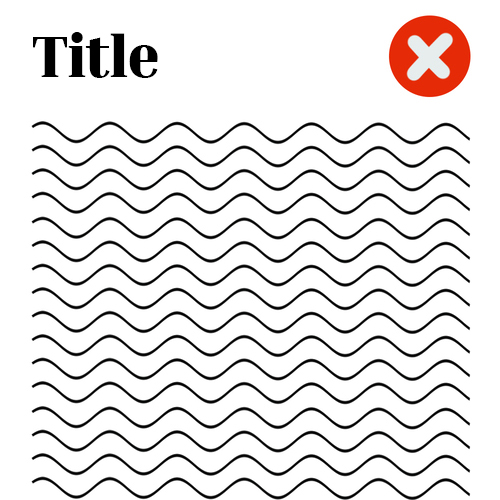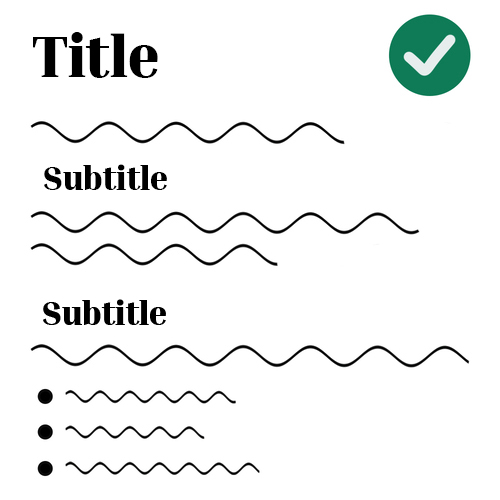 République Française (liberté, égalité, fraternité) Inria
République Française (liberté, égalité, fraternité) Inria
Dyslexia
Dyslexia is a learning disability that is specific to reading.
Dyslexia is a cognitive disorder.
It is also known as a cognitive disability.
Dyslexia is present from birth.
LDyslexia cannot be cured, because it is not an illness.
Dyslexia, like all DYS disorders, is not correlated with intelligence.
Being dyslexic does not mean a person is less intelligent.
A dyslexic person’s IQ may be below, equal to or above the IQ norm, just like everyone else.
What difficulties do people with dyslexia ?
-
A phonological language deficit.
In other words, difficulty in matching written sound to spoken sound. -
A deficit in the lexical pathway.
In other words, difficulty recognising words.
These difficulties may occur in isolation or in combination.
They lead to problems in :
- Reading
- Spelling
- Understanding texts
Examples of difficulties encountered :
- Difficulty identifying words
- Difficulty reading without mistakes and/or fluently
- Difficulty breaking down words in a sentence
- Slow reading
- Difficulty understanding texts due to reading difficulties
- Significant fatigue due to the activity of reading
- Often many spelling mistakes
It is important to remember that these examples
are not representative of all dyslexic people
Each person with dyslexia is different..
People with dyslexia may experience varying degrees of difficulty
depending on their dyslexia or associated cognitive difficulties.
What do you think about the readability of this information ?
Unstructured information

The lack of formatting and structure of the content makes it more difficult to understand the information. When text is justified, varying amounts of space are created between words. These varying amounts of space make linear reading difficult. When the language used is made more complex by the turns of phrase and vocabulary used, reading will require a greater effort, particularly for dyslexic readers. The effort required for reading leads to fatigue and comprehension difficulties.
Structured information

When the text is structured with :
- Semantics
For example: headings, sub-headings and lists - Varied content
For example: text, images, videos
The information is more accessible for people with reading difficulties, such as those with dyslexia.
Tips for better structuring of information
- Include headings and sub-headings
- Using bullet-point lists
- Keep paragraphs short
-
Complete the text with:
- Infographics
- Videos
- Illustrations
- Images
- Audio
- Do not justify the text
- Avoid visual overload
- Sufficiently spaced line length and height
- Sufficiently legible font size
- Avoid italics
- Give preference to common fonts
- Write texts using clear language
For further information
People with dyslexia will be dyslexic for the rest of their lives, but they can find strategies to compensate for their disability.
By using other means to obtain information :
-
Sound
For example, with videos and audio books -
Visuals
For example, through graphic facilitation, comic strips and infographics
Using tools to access information :
- Zooming to enlarge texts
- By customising the appearance of texts
- Using a screen reader
- Using voice recognition
Dyslexia
Dyslexia is a particular challenge in the acquisition of reading skills. It is a specific disorder affecting one or more cognitive functions. These cognitive functions may include language, motor coordination, attention, perception, memory, visuospatial functions and executive functions.
To find out more about these disorders, you can consult the following resources: Dyslexie et Dysorthographie de la Fédération Française des Dys, Dyscalculie de la Fédération Française des Dys, Dysphasie de la Fédération Française des Dys, Dyspraxie de Dyspraxie France Dys, Dysgraphie de Potentiel asso.
These disorders are said to be “specific” in that they affect one or more of the cognitive functions mentioned above, but not cognitive functioning as a whole. This makes them different from intellectual disability.
Dyslexia, being intrinsically non-pathological, cannot be considered an illness.
This disorder manifests itself from birth and has no correlation with intelligence. The IQ of a dyslexic person may be below, equal to or above the IQ norm, just as in non-dyslexic individuals.
What difficulties do people with dyslexia ?
There are many factors involved in the obstacles encountered by dyslexic individuals. Firstly, there is a phonological language deficit, characterised by a substantial disturbance in the concordance between auditory representations of sounds and their graphic equivalents. In other words, complexity emerges when it comes to matching a written sound with its spoken counterpart.
Secondly, a deficit in the lexical pathway. This deficit results in an impairment in the recognition of words. In other words, an inability to identify lexical terms effectively.
These deficits, whether in isolation or in combination, lead to problems in a variety of areas. In particular, they have a negative impact on reading, impairing fluency and accuracy when deciphering text. Similarly, spelling becomes a laborious undertaking, with frequent errors and difficulty in spelling words correctly. Finally, reading comprehension is hampered, compromising the ability to fully grasp the meaning of written sentences.
Dyslexic individuals face a range of difficulties, including word recognition, fluent and error-free reading, the division of words in a sentence, slowness in reading, comprehension of texts due to reading obstacles, fatigue arising from the activity of reading, and a propensity for spelling errors, some of which are phonetically probable.
It is crucial to stress that these illustrations do not fully capture the diversity of challenges inherent in dyslexia. Each dyslexic person is a unique entity, facing difficulties that vary in intensity depending on their dyslexia or other cognitive complications.
What do you think about the readability of this information?
Unstructured information :
When text is justified, varying amounts of space are created between words. These varying amounts of space make linear reading difficult. The lack of formatting and structure of the content prevents the information from being understood visually. When the language used is made more complex by the turns of phrase and vocabulary used, reading will require a greater effort, particularly for dyslexic people. The effort required to read will lead to comprehension difficulties and fatigue.
Structured information :
When information is given a sophisticated structure, it becomes more accessible, particularly when it is adorned with semantics. This is done through the use of headings, sub-headings and lists, all of which are conducive to in-depth understanding. The variety of content, including text, images and videos, amplifies the richness of the information, making it better suited to the needs of people with reading difficulties, including dyslexics.
The recommendations for optimal information structuring come from an enlightened perspective. The inclusion of headings and sub-headings, the use of bullet-point lists, keeping paragraphs concise and enriching the text with a variety of elements such as computer graphics, videos, illustrations, images and audio are all essential.
It is imperative to avoid any tendency to justify text, to avoid visual overload, to space lines sufficiently apart in length and height, to ensure that the font size is adequate, to avoid italics, to use conventional fonts, and to write texts with unquestionable linguistic clarity.
In addition to this, it should be recognised that dyslexics use opportunities to mitigate through adaptive strategies. These strategies involve exploring other sensory channels to acquire information, whether audibly through videos and audio books, or visually through graphic facilitation, comic strips and computer graphics.
The use of tools such as zooming to enlarge characters, personalising the appearance of text, using screen readers and voice recognition are all positive steps in the quest for accessible information.
